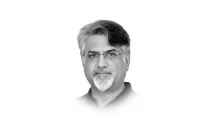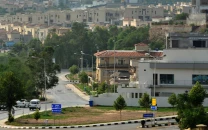Why hold a function at Moenjo Daro?
Even minor changes to its facade are magnified many times over in the context of its archaeological importance.

The writer is a PhD candidate in Environmental Policy at State University of New York at Syracuse
Moenjo Daro, or Mound of the Dead, is considered ground zero when it comes to the study of the Indus Valley Civilisation. Situated approximately 400kms north of Karachi, the site was discovered by accident when archeologist D Banerji initiated a dig in 1922 to explore the visible stupa in the area. What happened next stunned the world as the expedition revealed one of the world’s first modern cities. It contained dug wells for accessing clean drinking water, unheard of in civilisations dating back over 5,000 years. The wastewater systems, that a significant portion of South Asia lacks today, comprised effluent drains built with brick masonry that ran along unpaved streets. Sir John Marshall, the then director general of the Archaeological Department of India, remarked in a book that “never for a moment was it imagined that 5,000 years ago, before even the Aryans were heard of, the Panjab (sic) and Sind, if not other parts of India were enjoying an advanced and singularly uniform civilisation of their own, closely akin but in some respects even superior to that of contemporary Mesopotamia and Egypt.”
Today, we are not even half way through exploring the wonders of Moenjo Daro. Archaeologists have taken care not to rush into further exploration since the structures are vulnerable to even changes in air moisture. Efforts to stabilise the brick structures have run into problems. It is in this context that I find hosting the Sindh Festival on the grounds of Moenjo Daro baffling. Even minor changes to its facade are magnified many times over in the context of its archaeological importance. The installation of light fixtures, scaffolding for a staging area and influx of a large number of people will do irreparable damage to the site. Pakistan has passed a number of legislations protecting such archaeological treasures, including the Antiquities Act of 1975. The environmental legislation also calls for a detailed impact assessment whenever such activities are undertaken at protected heritage sites. There is no reason to believe that any such assessment was undertaken by the organisers. Indeed, the authorities themselves seem to be enablers in this instance. Moenjo Daro is one of six sites in Pakistan that fall under Unesco’s World Heritage List and are considered to be of “outstanding universal value”.
While the sentiments of the Sindh Festival organisers are to be applauded for trying to bring the world’s attention to our history, it reflects poorly on their judgment and that of the authorities to allow such an event to proceed at Moenjo Daro. There are a number of other ways to have celebrated our heritage. Bilawal Bhutto Zardari could have initiated a plan to highlight such heritage through changes in the curriculum. Another initiative could have been to use some of the funds for this event to develop a television documentary on our collective heritage. In holding this event at Moenjo Daro, Mr Bhutto Zardari would find that it would cease to be a cultural event and come to be seen as a political stunt. Pakistan is home to many historic and environmental treasures. We ignore them at our own peril.
Published in The Express Tribune, February 2nd, 2014.
Like Opinion & Editorial on Facebook, follow @ETOpEd on Twitter to receive all updates on all our daily pieces.














COMMENTS
Comments are moderated and generally will be posted if they are on-topic and not abusive.
For more information, please see our Comments FAQ